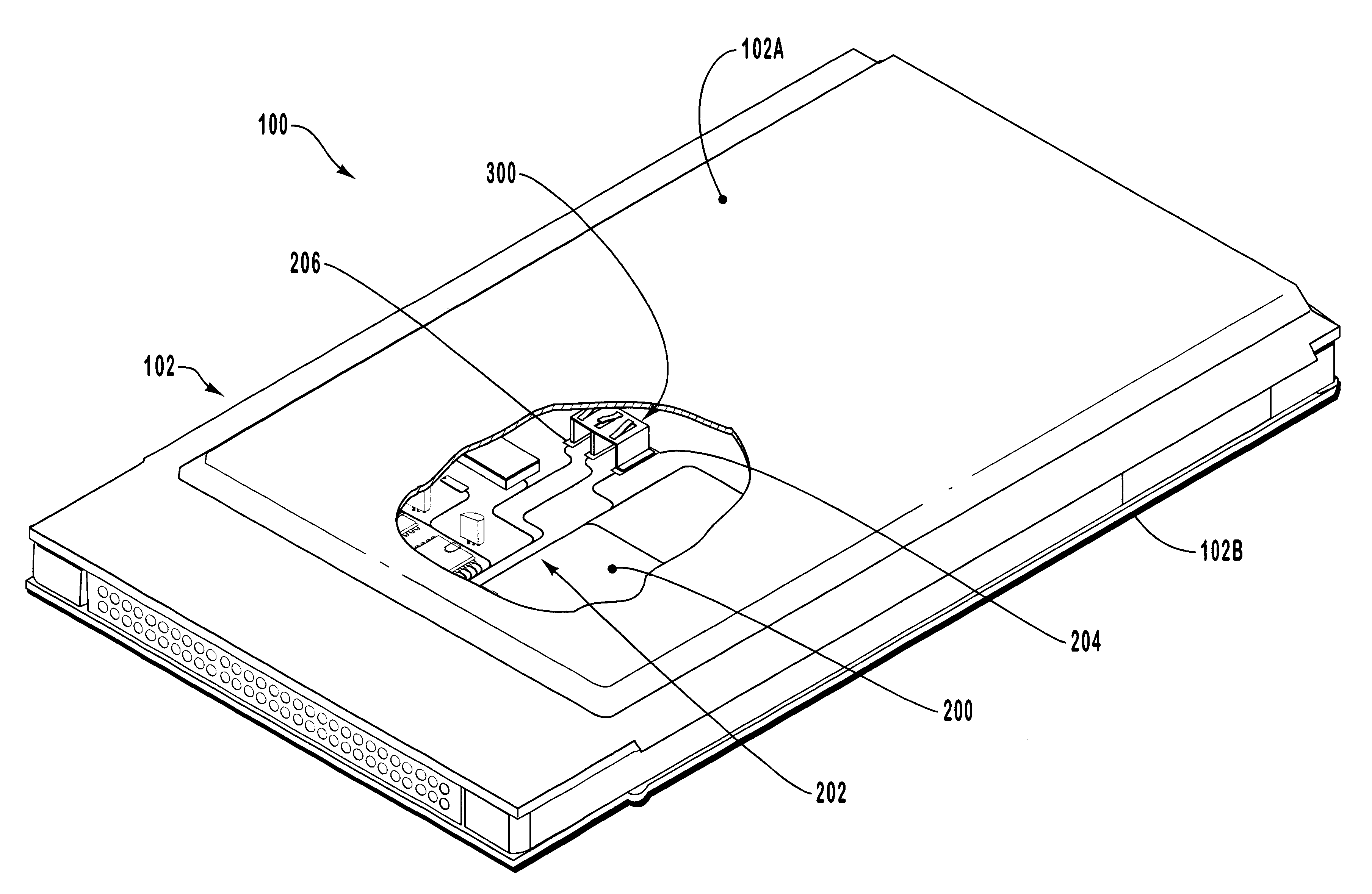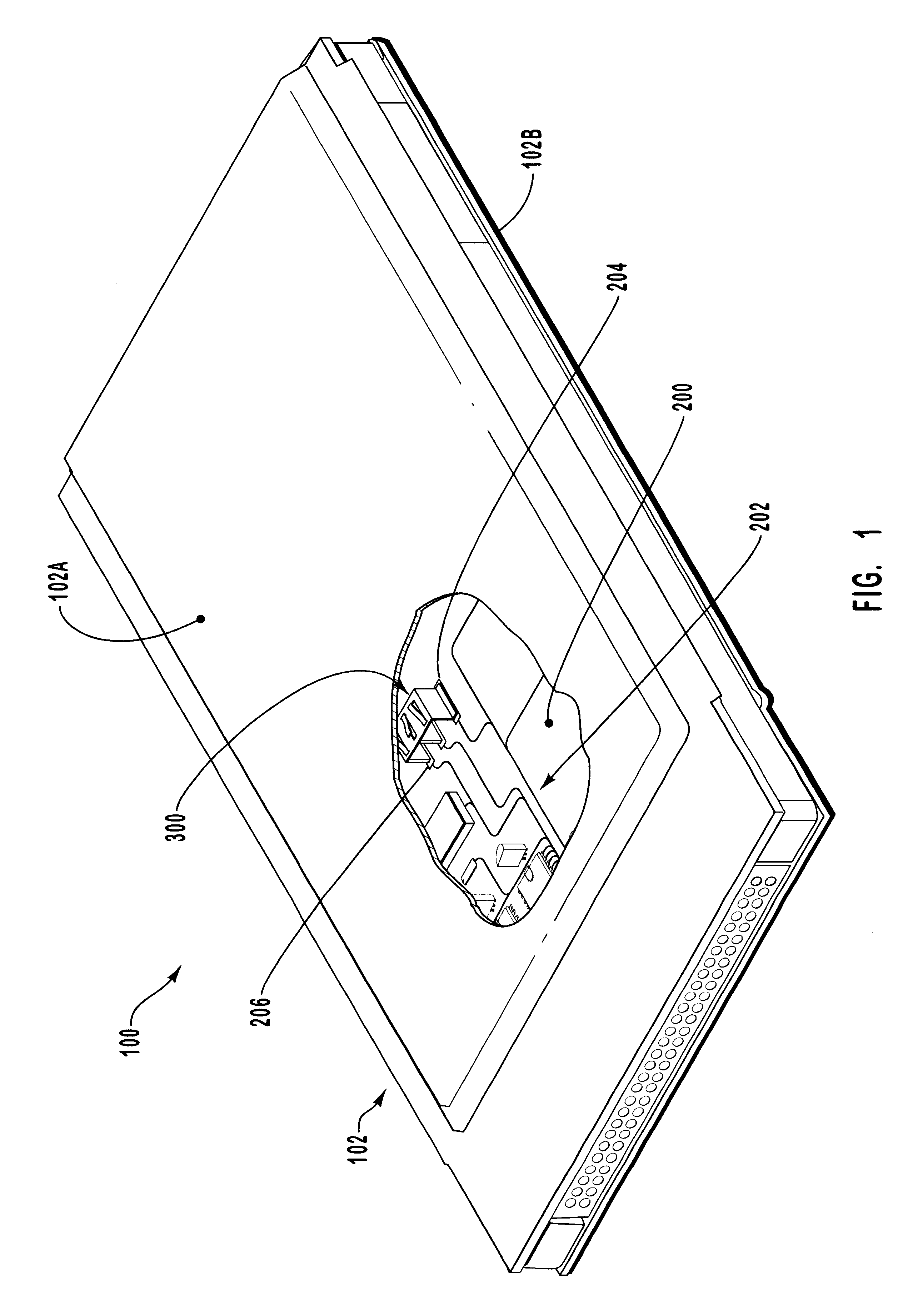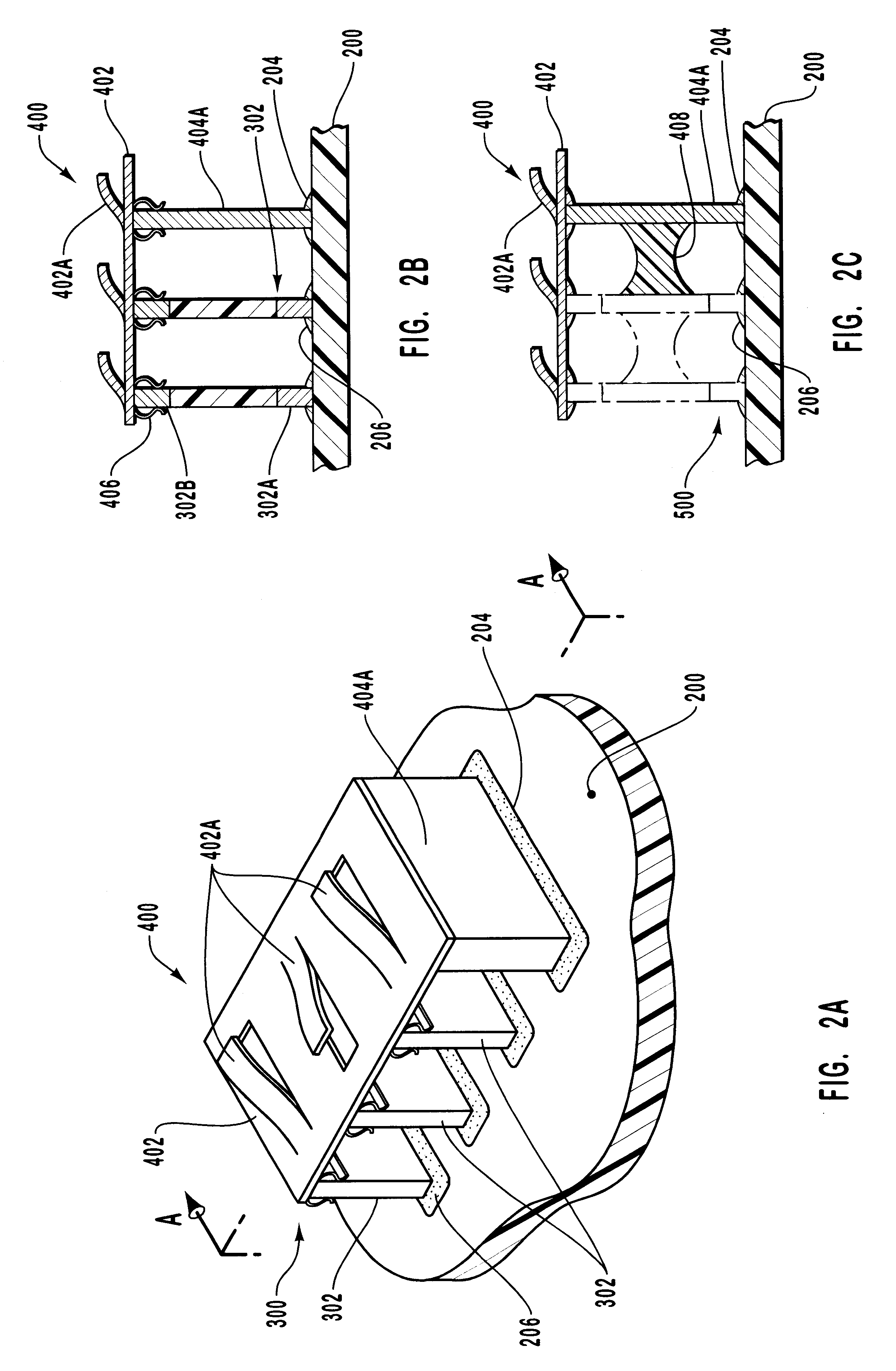Chip component assembly
a chip and component technology, applied in the field of printed circuit boards, can solve the problems of divergence in cost and performance, the average cost of computers has also declined during the same period, and the cost of computers has also declined
- Summary
- Abstract
- Description
- Claims
- Application Information
AI Technical Summary
Benefits of technology
Problems solved by technology
Method used
Image
Examples
Embodiment Construction
Reference will now be made to figures wherein like structures will be provided with like reference designations. It is to be understood that the drawings are diagrammatic and schematic representations of various embodiments of the claimed invention, and are not to be construed as limiting the present claimed invention, nor are the drawings necessarily drawn to scale.
Reference is first made to FIG. 1, wherein a PC card is indicated generally at 100. It will be appreciated that PC card may take any of a variety of forms including, but not limited to, a memory card, modem card, network card, or the like. It will likewise be appreciated that PC card 100 is an exemplary operating environment, and that embodiments of the present invention may be profitably employed in a wide variety of other environments as well. In general, embodiments of the present invention are suitable for use in any environment where printed circuit boards (PCB) are employed.
In the illustrated embodiment, PC card 10...
PUM
 Login to View More
Login to View More Abstract
Description
Claims
Application Information
 Login to View More
Login to View More - R&D
- Intellectual Property
- Life Sciences
- Materials
- Tech Scout
- Unparalleled Data Quality
- Higher Quality Content
- 60% Fewer Hallucinations
Browse by: Latest US Patents, China's latest patents, Technical Efficacy Thesaurus, Application Domain, Technology Topic, Popular Technical Reports.
© 2025 PatSnap. All rights reserved.Legal|Privacy policy|Modern Slavery Act Transparency Statement|Sitemap|About US| Contact US: help@patsnap.com



